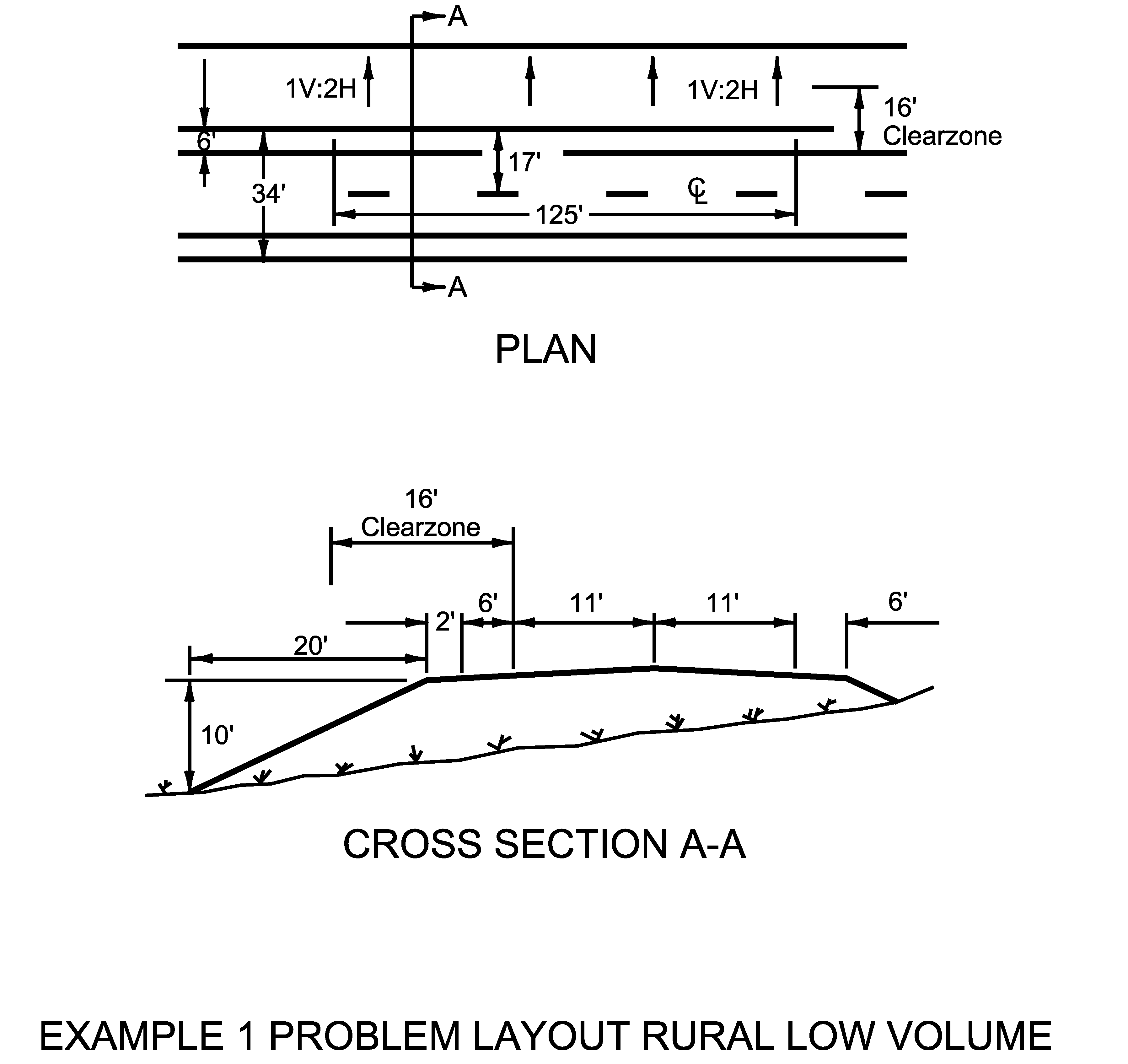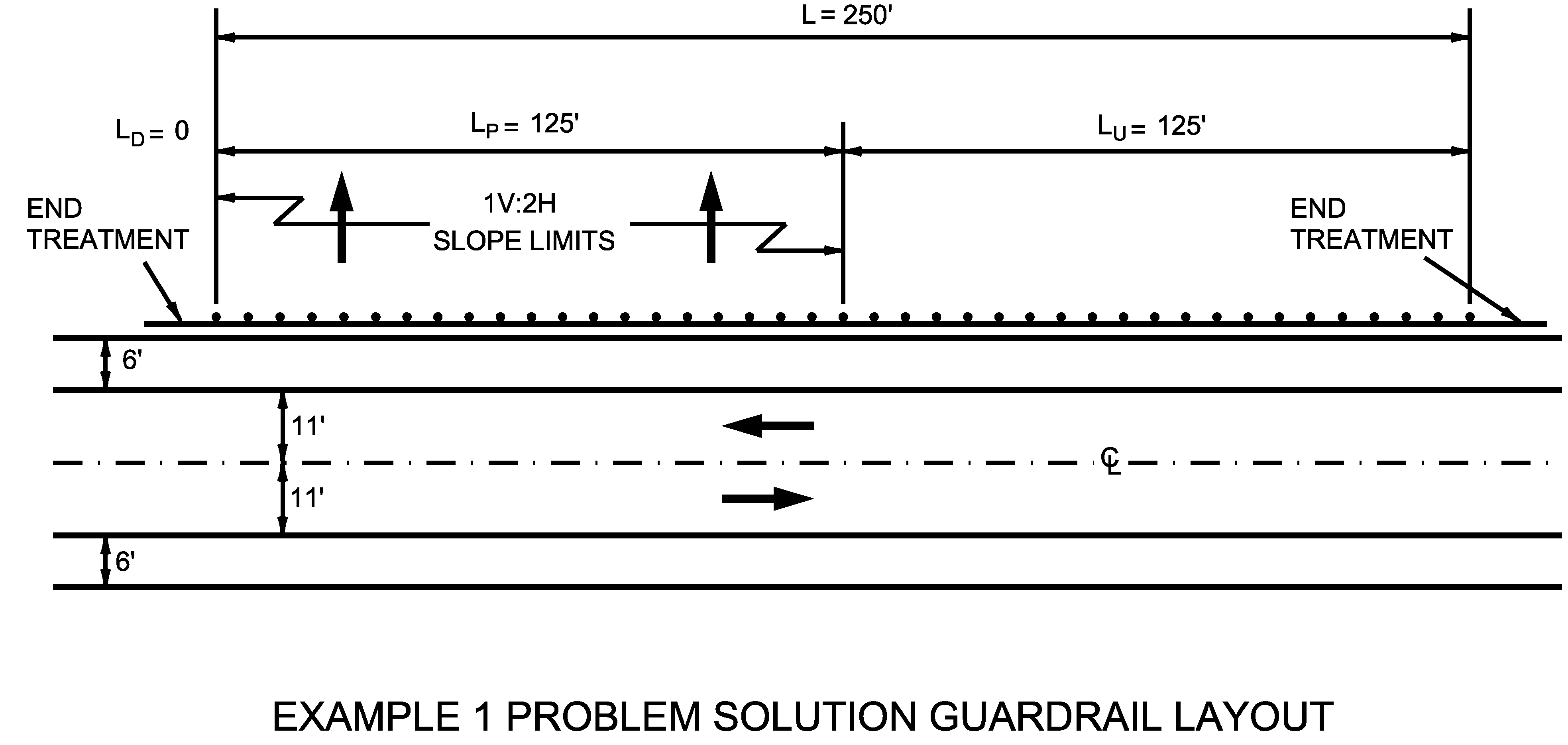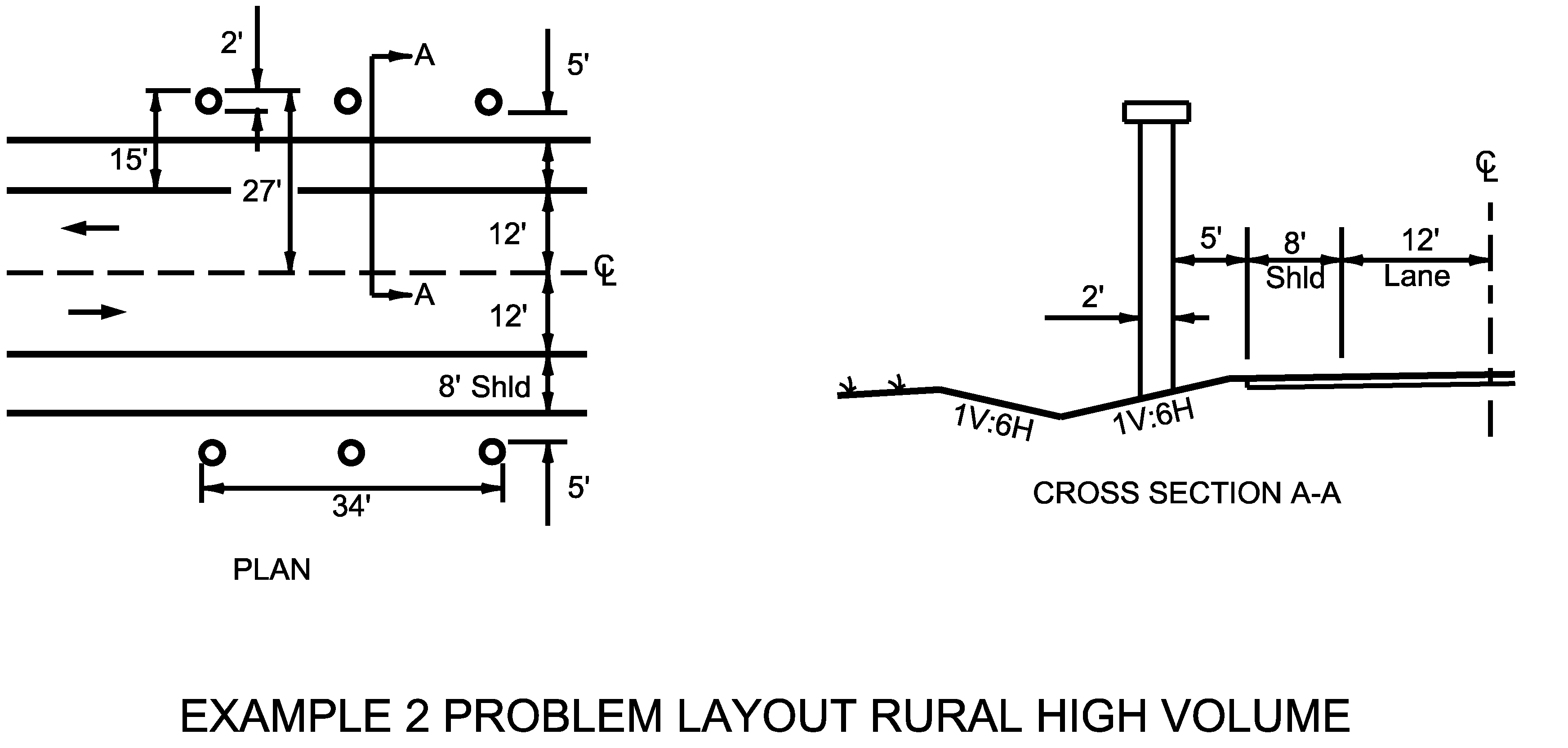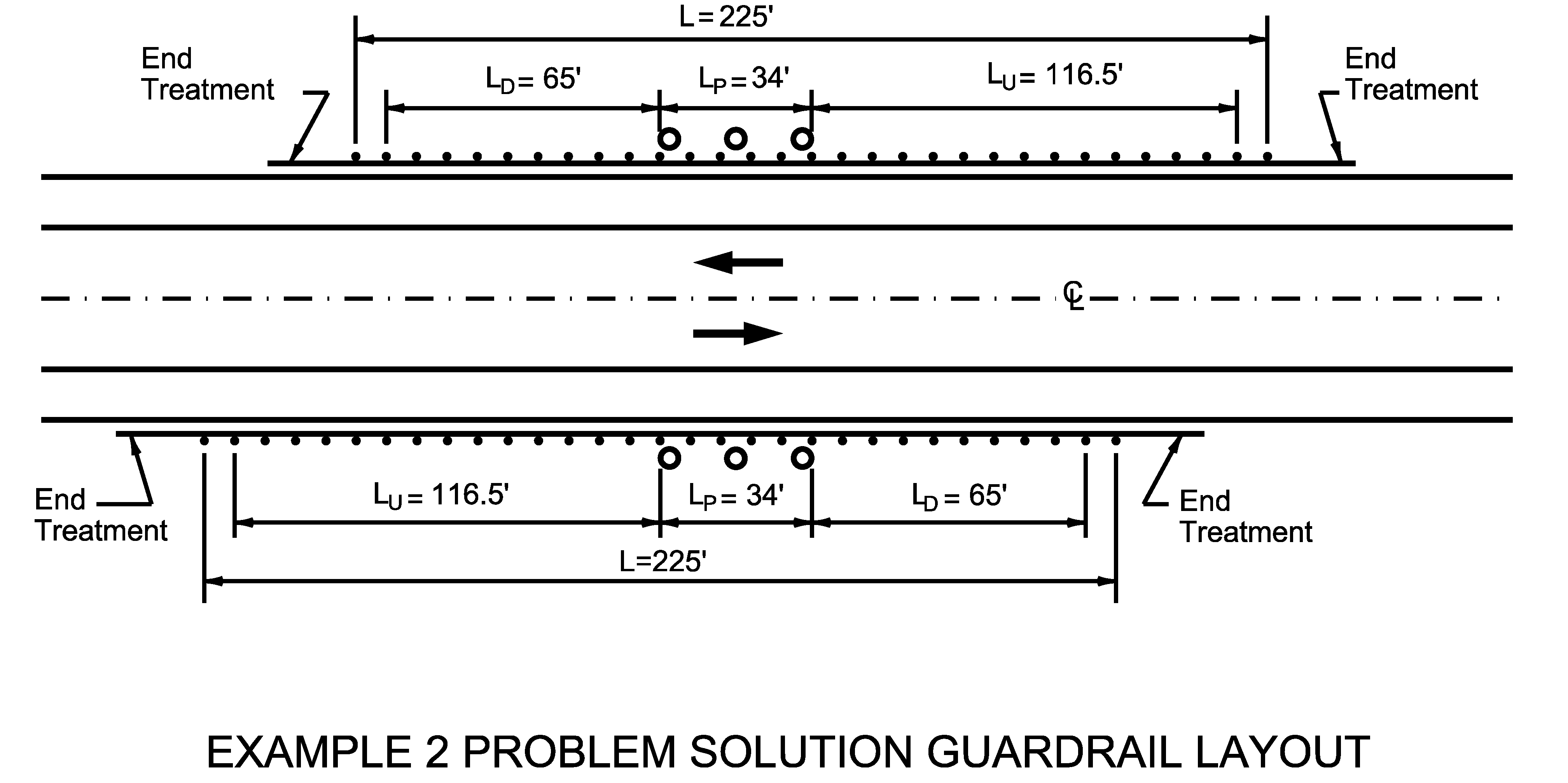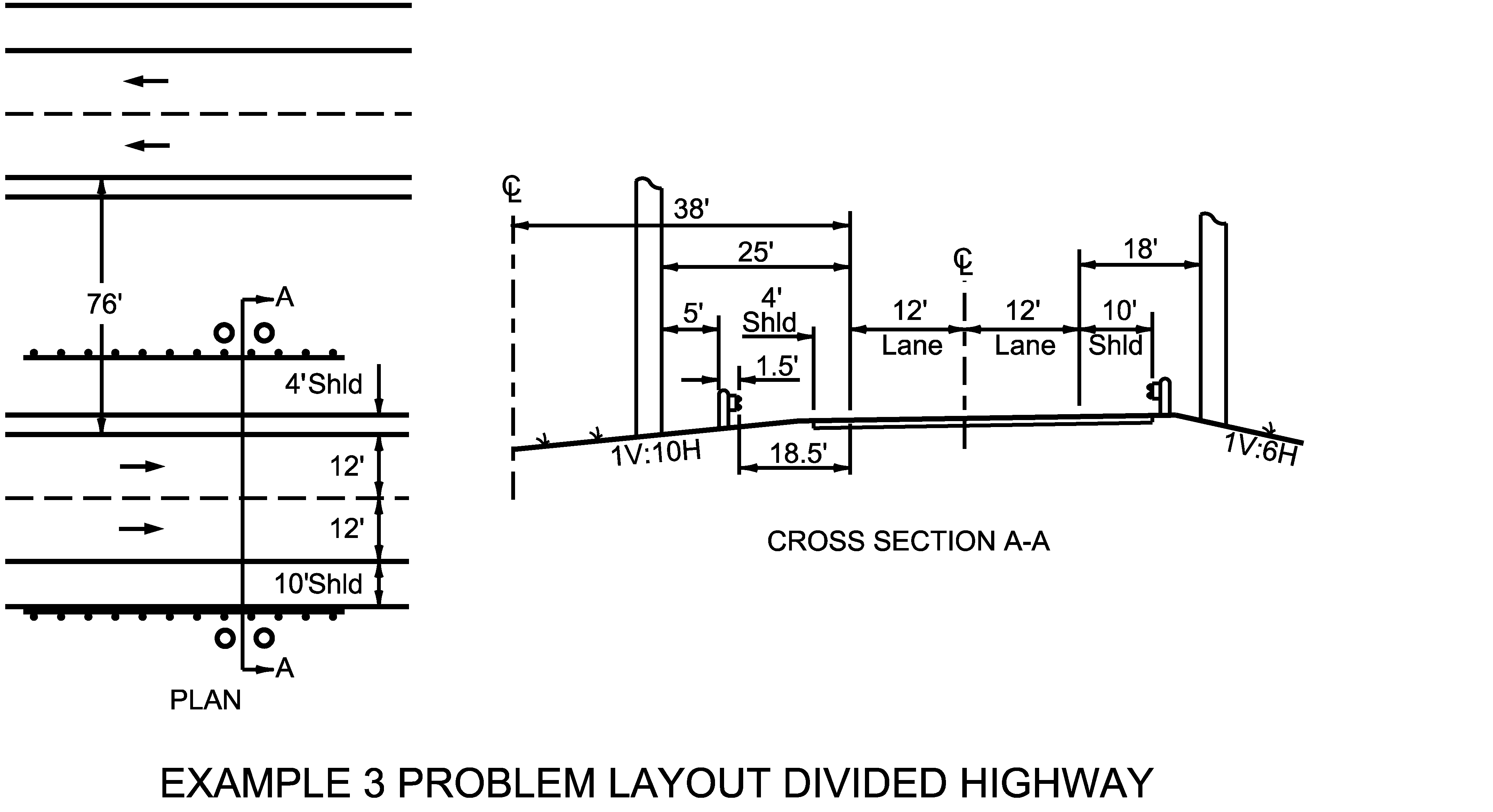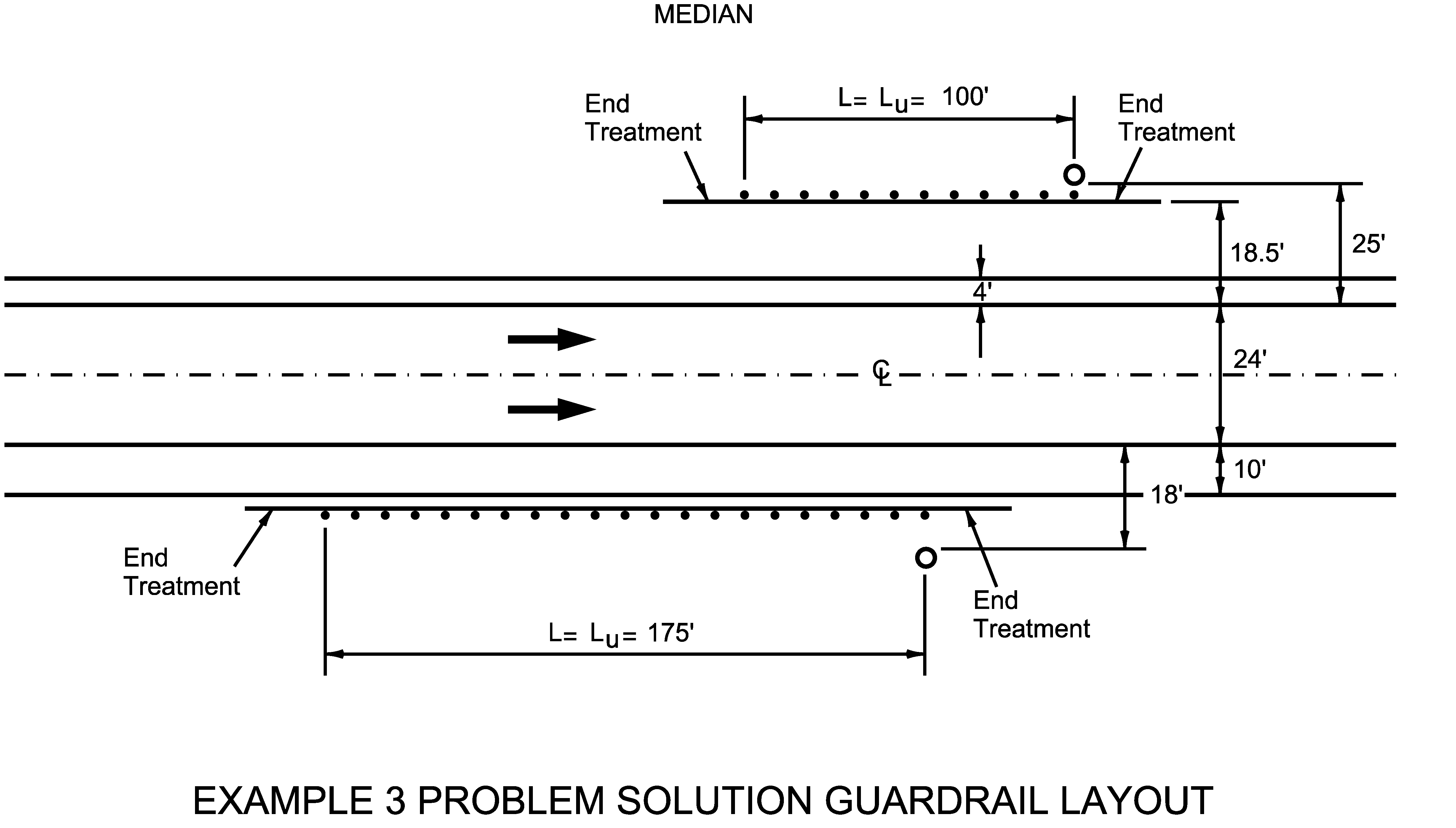Section 7: Example Problems
Anchor: #i1005711Example Problem 1
Given: A rural two-lane collector highway containing 6-ft wide shoulders and a current ADT of 500 is illustrated in Figure A-9. The area of concern is a 16-ft design clear zone that includes 1V:2H side slopes on a 10-ft high embankment section that is 125-ft in length alongside the highway.
Figure A-9. Example 1 Problem Layout Rural Low Volume.
Solution: From the information above and referring to Figure A-1 it is determined that a “rail is needed.” As shown in Equation A-1, the length of need is Ltotal = Lu+Lp+Ld. From the given information, Lp = 125-ft. Because the ADT is less than 750, Equations A-2 and A-3 are used to solve for Lu and Ld, respectively (if necessary).
For the upstream direction, the area of concern is the full (16-ft) clear zone width and the guard fence offset (Gu) is 6-ft. Substituting in Equation A-2.

A placement of guard fence alongside the 6-ft wide shoulder results in Lu = 125-ft.
Referring to Figure A-9, the length of guard fence needed in the downstream is zero because the offset distance from the edge of the travel lane (centerline marking) to the area of concern is greater than the design clear zone (17-ft greater than 16-ft). Therefore, Ld is zero.
The design placement is shown in Figure A-10 including 125-ft of guard fence adjacent to the obstacle plus 125-ft shielding traffic adjacent to proposed guard fence upstream of the obstacle. These lengths of need do not include end treatments.
Figure A-10. Example 1 Problem Solution Guard Fence Layout
Anchor: #i1005802Example Problem 2
Given: A rural two-lane arterial highway containing a shoulder width of 8-ft and a current ADT of 3500 is illustrated in Figure A-11. The areas of concern are bridge bents located 5-ft from the edge of shoulder. The side slopes are 1V:6H.
Figure A-11. Example 2 Problem Layout Rural High Volume.
Solution: Referring to Table A-1: General Applications of Conditions for Roadside Barriers bridge piers within the clear zone (30-ft in this case) indicates guard fence placement for the north side of the roadway displayed in Figure A-11. As shown in Equation A-1 the length of need is Ltotal = Lu+Lp+Ld. Therefore, Lp is 34-ft from the given (see Figure A-11) information. Because the ADT is greater than 750, Equations A-4 and A-5 are used to find Lu and Ld (if necessary), respectively:

Substituting in the equation, the upstream length (Lu) is 116.5-ft if placement is at the shoulder edge.
The downstream (westbound traffic) length of guard fence is also determined by substituting into Equation A-5:

Ld is 65-ft as shown above, based on the shoulder edge placement. For westbound traffic, the centerline is the edge of the travel lane and thus guard fence offset (G) is 20-ft (12-ft lane plus 8-ft shoulder) from the edge of the travel lane.
Total length of guard fence, Lu+Lp+Ld, thus is 116.5-ft + 34-ft + 65-ft or 215.5-ft; or, rounded to an even length of guard fence, 225-ft.
The solution for the south side of the roadway yields the same results; hence placement should be as shown in Figure A-12.
Figure A-12. Example 2 Problem Solution Guard Fence Layout.
Anchor: #i1005919Example Problem 3
Given: A divided (76-ft median) highway with 4-ft left and 10-ft right shoulder widths is illustrated in Figure A-13. The median slopes are 1V:10H, and the outside side slopes are 1V:6H. The cross-sectional design allows for the addition of a future lane on the median side of the present lanes. The areas of concern are overhead sign bridge supports offset 25-ft left and 18-ft right from edge of the travel lanes as shown below. The ADT is 10,000.
Figure A-13. Example 3 Problem Layout Divided Highway.
Solution: Crash cushions in lieu of guard fence should be considered, particularly for facilities with higher than 10,000 ADT. For this example problem assume crash cushions are not cost effective.
Because the median is sloped at 1V:10H, as shown in Figure A-13, guard fence may be placed thereon (see Figure A-5). Therefore, place the guard fence such that the back of the posts are 5-ft in front of the median overhead sign bridge support to allow for deflection, i.e., 20-ft from the edge of the travel lanes (including the 1.5-ft from the back of the post to the face of the rail).
Referring to Equation A-1, Ltotal = Lu+Lp+Ld. For one-way traffic operations, Ld=0; furthermore, for the overhead sign bridge support Lp=0. Equation A-4 is used to find Lu because ADT is greater than 750:
Equation A-6.
For the median side, Lu = 65-ft (rounded to 75-ft to conform to even lengths of guard fence) based on parallel placement for the full length of need, and placement on the 1V:10H slope 5-ft in front of the fixed object. In contrast, parallel placement at the shoulder edge would have required over 200-ft of guard fence.
For the right side of traffic, guard fence must be placed at the shoulder edge (Reference Figure A-5). Substituting in Equation A-2 to determine Lu:
Equation A-7.
Using parallel placement for the entire length, Lu = 111-ft (which should be rounded to 125-ft to conform to even lengths of guard fence).
Using parallel placement for the entire length of guard fence for both the median and left side, placement is as shown in Figure A-14.
Figure A-14. Example 3 Problem Solution Guard Fence Layout.
